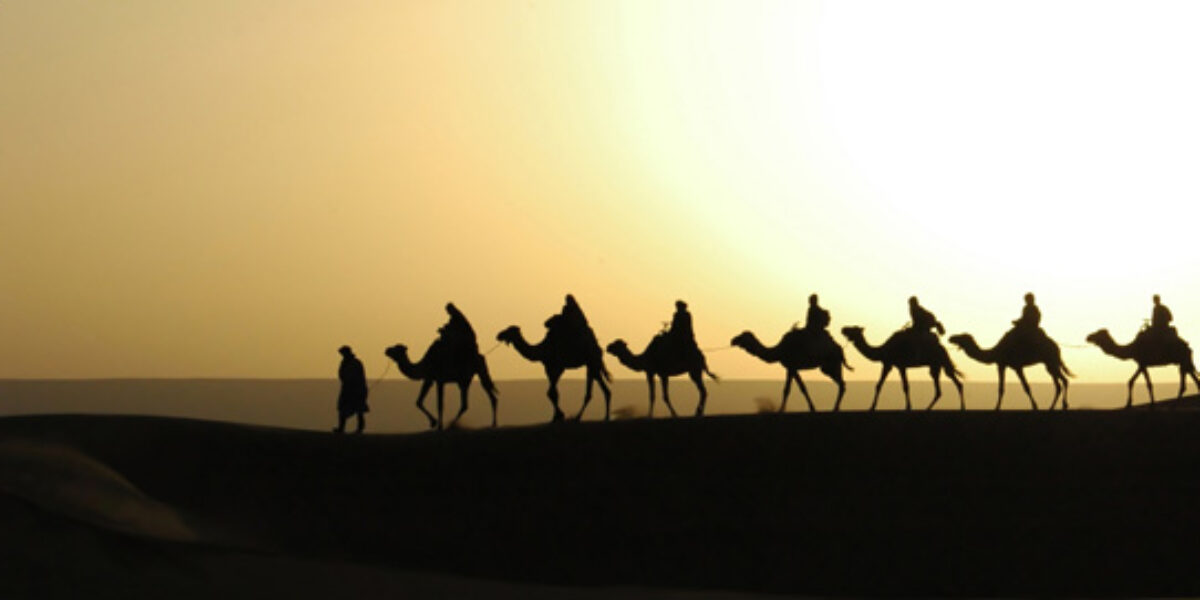Biblical characters couldn’t use trains, planes or buses, but they did use camels, chariots, sailing boats and the occasional giant fish.
| Means of Travel | Distances | Examples |
| Walking | about 20 miles per day | Peter walks 40 miles from Joppa to Caesarea in two days (Acts 10.23-25) |
| Camels | As a pack animal, a camel can carry as much as 1,000 lbs. and travel almost 30 miles per day. As a saddle animal, a camel can take its rider as far as 100 miles a day. | An Ishmaelite camel caravan takes spices from Gilead to Egypt (Gen 37.25). Rebekah and her traveling companions get on camels and leave with Abraham’s servant (Gen 24.61). |
| Donkeys | About 20 miles per day. Donkeys were used for transporting goods, and were not used for riding except by women, children, or those too weak to walk | The “Good Samaritan” uses his donkey to transport the man wounded by thieves (Luke 10.34). |
| Horses | From 25 to 35 miles per day. If people changed horses throughout the day, they could travel greater distances. | With a change of horses at Antipatris, Paul is taken by military escort from Jerusalem to Caesarea, approx. 60 miles, in two days (Acts 23.23-31). |
| Chariots | Horse-drawn chariots covered distances similar to horses alone, and were used by royalty or wealthy people. | A important Ethiopian official rides from Jerusalem to Gaza (Acts 8.28). |
| Sailing Boats | Seagoing boats were probably not built until around 3000 b.c. when the river peoples of Egypt and southern Iraq built reed boats. With the right conditions, sailing vessels could average from 5 to 6 knots (5 to 7 miles) per hour. | Jonah runs from the Lord by boarding a ship traveling to Spain (Jon 1.3). |




